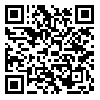Sat, Dec 6, 2025
[Archive]
Volume 14, Issue 4 (10-2024)
Iran J Ped Hematol Oncol 2024, 14(4): 266-275 |
Back to browse issues page
Ethics code: IR.AJUMS.REC.1401.270
Download citation:
BibTeX | RIS | EndNote | Medlars | ProCite | Reference Manager | RefWorks
Send citation to:



BibTeX | RIS | EndNote | Medlars | ProCite | Reference Manager | RefWorks
Send citation to:
Keikhaei Dehdezy B, Mafakher L, Farhadi Kia A, Salehi Kahyesh R, Perk E Y, Bitaraf S et al . Beta-Thalassemia Haplotypes in Southwest of Iran. Iran J Ped Hematol Oncol 2024; 14 (4) :266-275
URL: http://ijpho.ssu.ac.ir/article-1-856-en.html
URL: http://ijpho.ssu.ac.ir/article-1-856-en.html
Bizhan Keikhaei Dehdezy 

 , Ladan Mafakher
, Ladan Mafakher 

 , Arta Farhadi Kia
, Arta Farhadi Kia 

 , Roya Salehi Kahyesh *
, Roya Salehi Kahyesh * 

 , Emir Yiğit Perk
, Emir Yiğit Perk 

 , Saeed Bitaraf
, Saeed Bitaraf 

 , Mahmood Maniati
, Mahmood Maniati 




 , Ladan Mafakher
, Ladan Mafakher 

 , Arta Farhadi Kia
, Arta Farhadi Kia 

 , Roya Salehi Kahyesh *
, Roya Salehi Kahyesh * 

 , Emir Yiğit Perk
, Emir Yiğit Perk 

 , Saeed Bitaraf
, Saeed Bitaraf 

 , Mahmood Maniati
, Mahmood Maniati 


Faculty member of Thalassemia &Hemoglobinopathy Research center, research institute of Health, Ahvaz Jundishapur University of Medical Sciences, Ahvaz, Iran. & Faculty member of Thalassemia &Hemoglobinopathy Research center, research institute of Health, Ahvaz Jundishapur University of Medical Sciences, Ahvaz, Iran.
Abstract: (948 Views)
Background: Thalassemia is a widespread disease affecting people across various ethnicities and regions. In comparison to previous studies conducted in different regions of Iran, such as those in Lorestan and Sistan-Baluchestan, this study highlights unique mutation patterns prevalent in the southwestern population, emphasizing the genetic heterogeneity in this region. The identification of common mutations of beta-thalassemia in various ethnic groups within the nation is regarded as a practical solution for thalassemia prevention and prenatal diagnosis.
Materials and Methods: In this retrospective observational study, the medical records of 545 patients with various types of beta-thalassemia (silent, minor, intermediate, and major), referred to the center at Baqaei 2 hospital over a 14-year period (2008–2022), were examined. The age range of patients spanned from a 2-month-old fetus to a 34-year-old individual. Their mutations and thalassemia types were determined and confirmed using molecular methods, including PCR-ARMS (polymerase chain reaction-amplification refractory mutation system) and sequencing. The results were analyzed using SPSS software.
Results: The study examined 545 patients and identified 81 types of mutations. The most frequent mutations observed were CD36-37(-T)/N, IVSII-1/N, and IVS1-110(G>A). The study also noted population heterogeneity, reflected in the wide range of mutations found in the region. Among the patients, 6 had the silent form of beta-thalassemia, 488 had the minor form (464 patients and 24 fetuses), 9 had the intermediate form (8 patients and 1 fetus), and 42 had the major form (26 fetuses and 16 adults).
Conclusion: The identification of prevalent beta-thalassemia mutations facilitates disease control and prevention programs and is crucial for the identification of various beta-thalassemia gene mutations. This should be re-evaluated periodically. Observing a wide range of beta-thalassemia genotypes in the southwestern region of Iran suggests gene flow; thus, identifying these genotypes is instrumental in preventing and controlling the disease.
Materials and Methods: In this retrospective observational study, the medical records of 545 patients with various types of beta-thalassemia (silent, minor, intermediate, and major), referred to the center at Baqaei 2 hospital over a 14-year period (2008–2022), were examined. The age range of patients spanned from a 2-month-old fetus to a 34-year-old individual. Their mutations and thalassemia types were determined and confirmed using molecular methods, including PCR-ARMS (polymerase chain reaction-amplification refractory mutation system) and sequencing. The results were analyzed using SPSS software.
Results: The study examined 545 patients and identified 81 types of mutations. The most frequent mutations observed were CD36-37(-T)/N, IVSII-1/N, and IVS1-110(G>A). The study also noted population heterogeneity, reflected in the wide range of mutations found in the region. Among the patients, 6 had the silent form of beta-thalassemia, 488 had the minor form (464 patients and 24 fetuses), 9 had the intermediate form (8 patients and 1 fetus), and 42 had the major form (26 fetuses and 16 adults).
Conclusion: The identification of prevalent beta-thalassemia mutations facilitates disease control and prevention programs and is crucial for the identification of various beta-thalassemia gene mutations. This should be re-evaluated periodically. Observing a wide range of beta-thalassemia genotypes in the southwestern region of Iran suggests gene flow; thus, identifying these genotypes is instrumental in preventing and controlling the disease.
Type of Study: Research |
Subject:
General
Received: 2024/04/17 | Accepted: 2024/09/30 | Published: 2024/10/2
Received: 2024/04/17 | Accepted: 2024/09/30 | Published: 2024/10/2
Send email to the article author
| Rights and permissions | |
 |
This work is licensed under a Creative Commons Attribution-NonCommercial 4.0 International License. |


